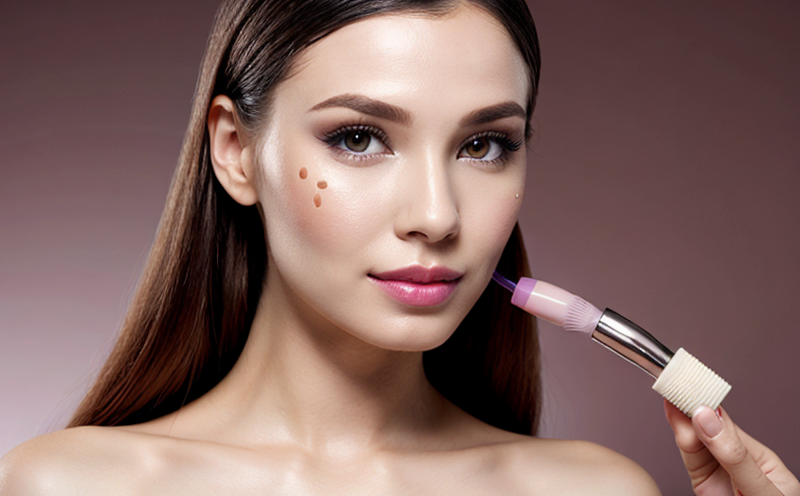In Vitro Photostability Testing of Cosmetic Formulations
The in vitro photostability testing of cosmetic formulations is a critical step in ensuring that products meet stringent safety and efficacy standards. This method evaluates the stability of active ingredients, pigments, and other components under simulated sunlight conditions to predict real-world performance and ensure product integrity over time.
The global cosmetics market continues to grow, driven by increasing consumer awareness of product quality and safety. Regulatory bodies worldwide are implementing stricter guidelines and standards for cosmetic products. For instance, the European Union's Cosmetics Regulation (EC) 1272/2008 mandates photostability testing as part of its comprehensive safety assessments.
Photostability testing is particularly important because sunlight exposure can degrade active ingredients, leading to potential safety issues or reduced efficacy. By using in vitro methods, we can replicate the effects of UV radiation without exposing products directly to natural light, which helps maintain product integrity and ensures compliance with international standards such as ISO 21750:2018.
The testing process involves preparing samples according to specific protocols and exposing them to controlled UV light sources. The test duration varies depending on the nature of the formulation but typically lasts for several hours or days. During this period, key parameters are monitored, including color change, degradation products, and overall stability.
Our laboratory employs advanced equipment such as UV-Vis spectrophotometers and HPLC systems to analyze samples post-testing. This ensures accurate measurement of any changes in the formulation's composition due to photodegradation. The results provide valuable insights into how well a product can withstand exposure to sunlight, thereby informing formulation adjustments if necessary.
By incorporating in vitro photostability testing early in the development cycle, cosmetic manufacturers can make informed decisions about ingredient selection and formulation design. This approach not only enhances product safety but also reduces the need for extensive animal testing by offering reliable alternatives that meet regulatory requirements.
- Reduces reliance on animal testing
- Ensures compliance with international standards
- Enhances product safety through early detection of potential issues
- Supports sustainable practices by minimizing waste associated with failed formulations
In summary, in vitro photostability testing is an essential tool for the cosmetics industry. It provides critical data that helps manufacturers develop safe, effective products while adhering to regulatory guidelines and promoting sustainability.
Benefits
The benefits of in vitro photostability testing extend beyond mere compliance; they contribute significantly to enhancing the quality and safety profile of cosmetic formulations. Here are some key advantages:
- Enhanced Product Quality: By identifying potential stability issues early in development, manufacturers can refine their formulas before finalization.
- Increased Safety: The test ensures that products do not pose risks due to photodegradation of active ingredients or other components.
- Efficient Resource Utilization: Testing in vitro helps avoid costly mistakes down the line, such as failed batch production runs or recalls.
- Regulatory Compliance: Meeting stringent regulatory standards is crucial for market access and consumer trust. In vitro methods help achieve this efficiently.
- Sustainable Practices: Reduced reliance on animal testing aligns with broader sustainability goals within the industry.
These benefits collectively support a more responsible and efficient approach to cosmetics development, ensuring both regulatory compliance and superior product performance.
Why Choose This Test
Selecting the right testing method is crucial for achieving accurate results that meet your specific needs. Here’s why in vitro photostability testing stands out:
- Accuracy and Precision: Our state-of-the-art equipment ensures precise measurement of degradation products and color changes.
- Time Efficiency: In vitro tests can be conducted more rapidly than traditional animal studies, saving valuable time in the development process.
- Cost-Effectiveness: By eliminating the need for extensive physical testing or large-scale production runs, this method reduces overall costs associated with product development.
- Safety and Ethics: Choosing an alternative to animal testing aligns with ethical standards while ensuring product safety.
- Comprehensive Data: The detailed insights provided by in vitro photostability testing offer comprehensive information about a formulation's performance under real-world conditions.
In summary, opting for in vitro photostability testing not only streamlines the development process but also ensures robust product quality and safety. This makes it an indispensable tool for any cosmetic manufacturer committed to excellence and compliance.
Environmental and Sustainability Contributions
In vitro photostability testing plays a significant role in supporting environmental sustainability by reducing the need for extensive physical testing. This approach minimizes resource consumption, waste generation, and energy use associated with large-scale production runs or repeated animal tests.
- Reduced Resource Consumption: By using controlled laboratory environments rather than outdoor conditions, this method conserves water, electricity, and other resources that would otherwise be used in extensive physical testing.
- Minimized Waste: The absence of failed batches due to photostability issues translates into less waste generated during the manufacturing process.
- Ethical Considerations: Alternatives like this test help reduce dependency on animal testing, which is ethically sensitive and regulated in many regions.
Moreover, by ensuring that products maintain their integrity over time, in vitro photostability testing supports sustainable practices through reduced waste and enhanced consumer satisfaction. This aligns with broader industry initiatives aimed at promoting environmental responsibility and ethical business practices.





